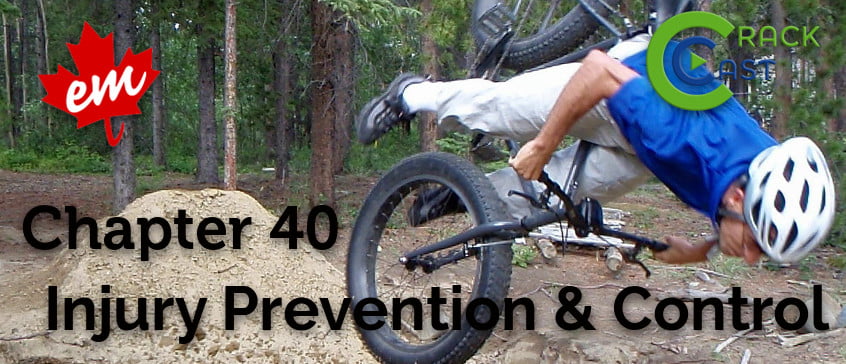This episode of CRACKCast covers Rosen’s Chapter 040, Injury Prevention and Control. Although we typically think of the role of the emergency physician in the acute care management of patients, they can be crucial in identifying public health concerns and exacting broader system based changes necessary to save lives.
Shownotes – PDF Link
Rosen’s in Perspective:
- Trauma is a DISEASE
- This is a cognitive shift emphasizing that trauma isn’t the outcome of some misfortune or random event, but predictable outcome of a specific chain of events
- Injury from trauma is the leading cause of death for most age categories in North America, and costs the system over 117 billion dollars alone in the US annually
1) What are the three key aspects to Injury Control?
Prevention
- must understand the epidemiology
- look into the biomechanics
- use education, research and public policy/law enforcement to prevent injury
Acute Care
- institutions and protocols around managing trauma
- Trauma system with referral hospitals, EMS system, Guidelines for care, and following care with outcome research
Rehabilitation
- Physical Therapy, Occupational Therapy, Mental Health providers
2) What makes up the Injury Triangle?
First developed by Dr. William Haddon, physician administrator for the National Highway Traffic Safety Administration (NHTSA)

3) List 6 of 10 potential strategies for preventing transfer of energy

Wise Cracks: What can you actually do, as a health practitioner, to help injury prevention?

This post was uploaded and copy edited by Ross Prager (@ross_prager)


